After fast track to manager gig, Carl Robinson has Whitecaps on right path

Carl Robinson didn’t want to be head coach of the Vancouver Whitecaps. After just three years as an assistant, he didn’t think he was ready.
“I didn’t want the job. I stressed this to people: I wasn’t looking for the job. I wanted to be an assistant for seven years. That was my plan,” Robinson told SI.com. “I joke with people that I didn’t get it by default because Bob [Bradley] turned it down; I was actually probably third choice because I think Frank Yallop was in for it as well.”
'Coachable' duo Clint Dempsey, Obafemi Martins continue to thrive
Despite being third on the shortlist, Robinson took the Whitecaps to the playoffs in 2014. They set the record for a Canadian franchise with 50 points in the standings, winning the Cascadia Cup and qualifying for the CONCACAF Champions League.
Robinson, as a player, made a surprise move to Major League Soccer in January 2007, when he still had 18 months left on his contract at Norwich City, with an eye toward his post-playing days.
Like so many nearing the end of their careers, he knew he wanted to coach.
“I got to a stage in England where I was 29 years of age and I’d just been in the Premier League, was playing in the Championship at Norwich, and I wasn’t enjoying my football,” he says. “It takes its toll on your body. I thought, ‘Now’s the time I want to get into serious coaching.'"
Robinson’s career spanned the top three tiers in England from 1995 to 2007 before he jumped the Atlantic Ocean. He won the English Championship with Portsmouth in 2002 and Sunderland in 2005, earning 52 caps for Wales in three World Cup and European Championship qualification bids along the way.
LA Galaxy striker Robbie Keane began his career at the same time as Robinson at Wolverhampton Wanderers. The two broke into the first team together, and Keane was the best man at Robinson’s wedding.
During his time with Toronto FC and the New York Red Bulls, Robinson made 17 trips back to Wales to complete his UEFA B, A and Pro licenses. He retired after making just two appearances during an injury-shortened 2011 season, when he took a player-coach role under Hans Backe.
His focus had turned to coaching, and Robinson wanted to avoid the pitfalls of many ex-players who struggle to transition into their new career. He believed his endless travel and tireless study of the game gave him the best chance to succeed.
“The reality is, when you start your management or coaching career, it’s like being an apprentice or a college draftee again, having to do all the hard work,” he says. “If it’s not going to work out, it’s not going to be through hard work and effort—it’s going to be because I’m not good enough.”
Knowing that Backe would not return as the Red Bulls’ head coach after 2012, Robinson joined incoming manager Martin Rennie’s staff in Vancouver. After Rennie was fired, he took over.
MLS Power Rankings Week 9: RBNY finally falls; D.C., N.E., Seattle surge
The Whitecaps head job had proven to be an unstable position since the team joined MLS. None of the four coaches so far has lasted longer than Rennie—but then again, no coach has enjoyed the same kind of success as Robinson in just over a year in charge.
Right away, he set about remaking the team’s image on the field. It closely matched that of its new coach, the youngest foreign manager in the league at 38.
“I wanted to make the group younger. I wanted to make the group hungrier. I wanted to bring a togetherness with the group,” says Robinson, who lists Backe, former Wales manager Josh Toshack and Ipswich Town boss Mick McCarthy as his biggest coaching influences. “We were thrown challenges along the way, but the group stuck together, which is always important in any team sport. They got their rewards in the end. Not me—they got their rewards because they thoroughly deserved to get into the playoffs.”
An exodus of veterans occurred as Robinson restructured the squad, including Joe Cannon, Lee Young-Pyo, Kenny Miller, Andy O’Brien, Jay DeMerit and Nigel Reo-Coker. The bizarre saga of Camilo Sanvezzo’s transfer to Querétaro also passed, with the club netting a record transfer fee.
In their places, a slough of younger players joined to club or took on magnified roles. Robinson hasn’t been shy about relying on Homegrown Players Sam Adekugbe and Russell Teibert, along with draftee Kekuta Manneh and a revived Matías Laba.
Robinson also spent a month in Central and South America during both offseasons of his tenure to unearth more players with potential (Octavio Rivero, Deybi Flores, Nicolás Mezquida and Diego Rodríguez) and find experienced teammates to guide them (Pedro Morales and Kendall Waston, who join domestic transfers Steven Beitashour, Mauro Rosales and Pah Modou Kah).
These annual trips to obscure fields south of the equator often lead Robinson to players whose fire goes beyond a simple taste for having a ball at their feet. Those who play in the glamorous cathedrals of La Bombonera or the Maracanã often make a comfortable living, but those aren’t the players he wants.
Real Salt Lake, LA Galaxy provide their own spark after lightning delay
“People ask why I go to South and Central America, and I do for one reason: because they’ve got hunger in their game,” says Robinson, repeating a keyword in his player identification philosophy. “I’ve got that in me as a young manager. I need hungry players. If I don’t have hungry players, then I might as well leave now. That’s the reason why there’s a constant South American, Central American pipeline: because they have to succeed.”
Becoming younger also fits nicely into MLS’s salary framework. Without the financial clout of the LA Galaxy, Seattle Sounders or the New York franchises, the Whitecaps need every bargain to succeed as a business.
“All players make mistakes, and old players sometimes are hard to change their habits,” Robinson says. “I had younger players who were ready to play on lower salaries, and the longer-term objective of the club is to build a core of players that can be together, like a Real Salt Lake, for a number of years. We’re at the early stages of that here in Vancouver, and tough decisions needed to be made in the first year of me being a head coach.”
Tactics and system of play change depending on the player pool, so Robinson prefers to focus on his players’ built-in qualities: character, work rate and loyalty.
“I’m trying to build character into the group in there that says if you’re playing, you’re the same person as if you’re not playing,” he says. “If you’re not happy, you come and see me. I can be the bad guy, which I am sometimes, but they never turn on each other.”
His team plays as confidently as he coaches, attacking ferociously and defending with a bite that suggests every player takes losing possession as a personal insult. Consequently, Vancouver has committed the most fouls in MLS and picked up the most yellow cards—but it also leads the league in chances created and shots on target.
Chivas USA academy's disintegration is LA Galaxy's gain, as LAFC passes
“On the field, I think every manager wants to be a guy who passes the ball, moves the ball, attacks well and wins games 4-0,” Robinson says. “Unfortunately in the business, even in the Premier League, that doesn’t happen.”
Robinson’s observations of football’s dichotomy are proven particularly prescient a couple weeks after speaking with SI.com, as Chelsea and Arsenal’s scoreless draw all but wraps up the title for José Mourinho’s team.
“The two examples I use are Chelsea, who win every game, but win 1-0, and get called boring … and you’ve got Arsenal, who play fantastic and are brilliant to watch but haven’t won,” Robinson says. “Both are right, and both get criticized.”
The North American press might be more gentle than its European counterpart, as United States manager Jurgen Klinsmann likes to remind writers every few press conferences, but Robinson says he enjoys media pushback. He’ll always protect his players, but he answers questions with a candor rarely seen from somebody in a job that is secretive by nature.
“I always tell the truth, because as a player, managers were very respectful to me and told me the truth, whether I played or didn’t play, why I didn’t play,” Robinson says. “So I’d never tell lies, and I always tell them as it is.”
Robinson enacted a policy unprecedented in MLS, opening the entirety of every training session to media. While many coaches live paranoid about opponents discerning their tactical plans, Robinson sees every day as an opportunity to prove his ability as a manager.
“What I’ve found with management—and what I like—is everyone has an opinion. This game is about opinions, and I’m a firm believer that no one’s right and no one’s wrong,” Robinson says. “That’s part of learning that I think a lot of managers don’t want to know because they take things personal, what people write about them. I don’t. I take it as a learning tool, and as long as I continue to learn, I’ll be successful.”
Robinson takes a hands-on approach in all aspects, arriving at the training ground at University of British Columbia before the daily 8 a.m. staff meeting. Players begin showing up at 9, and training starts at 10:30.
Sometimes, he’ll ask assistants Martyn Pert and Gordon Forrest to run the session—Marius Røvde handles goalkeeper coaching duties—after giving them a set of parameters and goals for the day.
MLS sets fixed list of players for allocation order among new '15 rules
“I challenge them because my coaches need to get better. I’ve been in that position under Martin and under Hans, and I was challenged. I wanted to be challenged because the only way you get better in this life is if you are challenged,” Robinson says. “I try to give them as much free rein as I can. When we talk about tactical information and nailing down details for the game, then it’s my job. I get involved and I say what I want from the team.”
It's all part of a desire to empower all members of the team structure. Vancouver boasts that it has “one of the most unique and integrated soccer development programs in North America.”
“One thing I did learn and I have learned over the last 16 months is, management is not just about picking and choosing the 11 on Saturday,” he says. “Management is managing your group of players, managing your staff but also managing upwards: board and ownership.”
Robinson points to his two-year UEFA Pro license course as an invaluable source of information for dealing with those above him in the hierarchy, including president Bob Lenarduzzi and vice president of soccer operations Greg Anderson.
His ultimate goal of coaching in the managerial gauntlet that is the Premier League will have to wait a while still. Robinson says he's not ready for it yet, and he signed a long-term extension with Vancouver in January.
He says making the playoffs in his first year as a coach “meant more to me … than anything I’ve done in my career.” Robinson won't say how long his new deal runs, but he confirms with a sheepish smile and a nod that it’s longer than two years.
It’s a major investment by the Whitecaps in a young coach, but one that seems to have earned the time to see his project through. Robinson says he believes Vancouver could beat any team in MLS—as it did in handling the defending champion LA Galaxy, 2-0, on April 4—but has also shown it can lose to anybody–as it did losing to the San Jose Earthquakes two games later.
The trick now is getting the team to do the former more often, which is particularly challenging with a squad of less experienced players. He again uses Arsenal as an example, mentioning the time he has spent in London in recent offseasons observing Arsène Wenger as he wrestles with similar issues of achieving stability.
MLS at 20: Epic original branding, logos for the league's first 10 teams
“The way we improve is by being more consistent,” he says. “I don’t want to be a team that gets up in the top two one year and then finishes bottom of the West in the next year. I think that’s just happy-go-lucky, and I don’t want to be a happy-go-lucky manager. I want to be a consistent manager that’s able to move this club forward.”
Despite playing in a market without much mainstream MLS attention—American fans and media tend not to look north of the 49th parallel—Robinson says he’s content to stay out of the spotlight for now.
“The more public attention brought to us means more pressure on my young players. I want to take the pressure away from my young players, so we’re quite happy going under the radar,” he says. “If there’s a week to go before the end of the season and we’re quietly under the radar but we’re in contention to win something, then I’ll be a very happy man.”
At the current rate, it might be difficult to remain a secret much longer.
The day after sitting down with SI.com, Robinson leads his team to a narrow win in Salt Lake. In a place Vancouver never won previously and with playmaker Morales suspended, he debuts a new system with three defensive midfielders.
In the 80th minute, Teibert, wearing the captain’s armband, breaks out of his withdrawn position to bomb down the left flank and cross toward Darren Mattocks. The Jamaican outsmarts veteran defender Jámison Olave to score the only goal of the game.
Robinson again shows his tactical acumen, exploiting his team’s flexibility to choreograph another unique result in a season thus far full of statement victories.
In 2015, the Whitecaps have won by dominating possession, by taking advantage of opposition errors on the counterattack and even by gritting their teeth through a match with two opposition red cards on the road at 4,450 feet in elevation.
“We spoke about it yesterday for the first time, about how we were going to play, and they took the information on board,” Robinson says after the game. “I know they’re fantastic individuals in there, talented players, but what I learned today is, they’re smart footballers as well. It’s the next stage of our continuing development.”
A development, like their coach’s, that seems to be right on track.
GALLERY: Critiquing MLS's 2015 uniforms
Critiquing every MLS uniform, head to toe
New York City FC
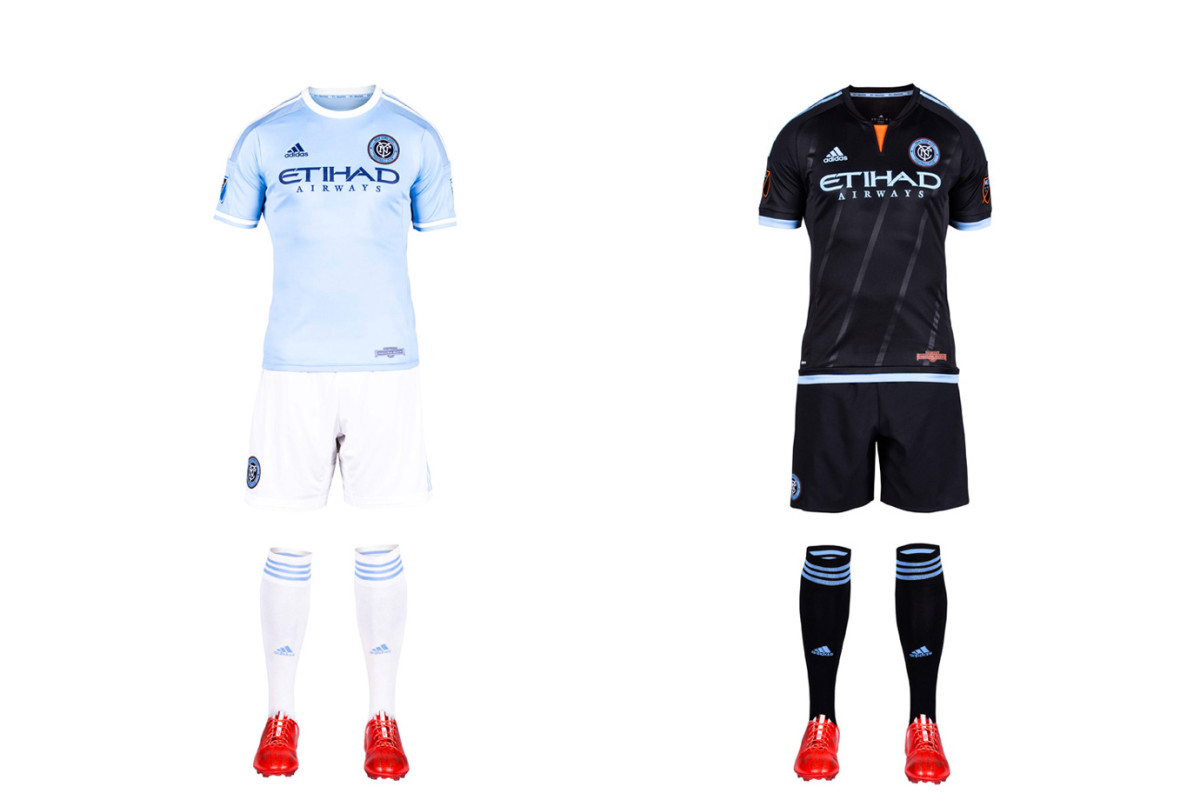
New York City FC took some heat for its sky blue home shirt, which looks a whole lot like the one worn by parent/sister club Manchester City. But an homage was inevitable, and NYCFC has differentiated itself from MCFC, and the rest of MLS, with the white shorts and socks. It’s a sharp look. The away kit, highlighted by a flash of orange (from the city flag) at the neck and five stripes you can barely see that "represent the five boroughs of New York City," is lazy. With a blank template, NYCFC should’ve come up with something other than the mono-black already worn in D.C. and Columbus.
LA Galaxy
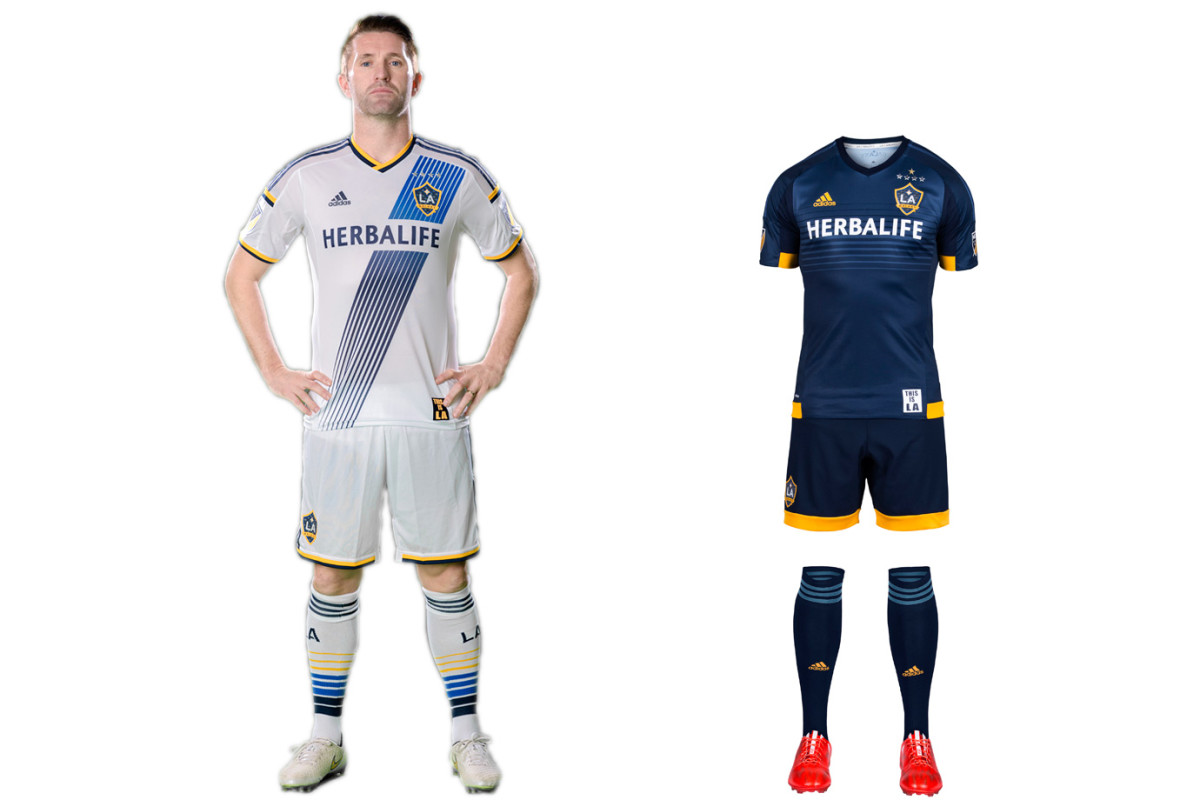
After several overhauls—LA wore black and teal, then teal and yellow, then yellow and green—the Galaxy’s white and blue brand has taken root. Three championships in four years certainly help. The sash on the home uniform, re-introduced in 2012, has quickly become iconic, and, along with the socks, helps make this all-white kit stand out. The new secondary set maintains the same feel as its recent predecessors. The yellow accents look sharp, but we can’t help but feel a white or yellow sash would tie the uniforms and brand together.
Chicago Fire
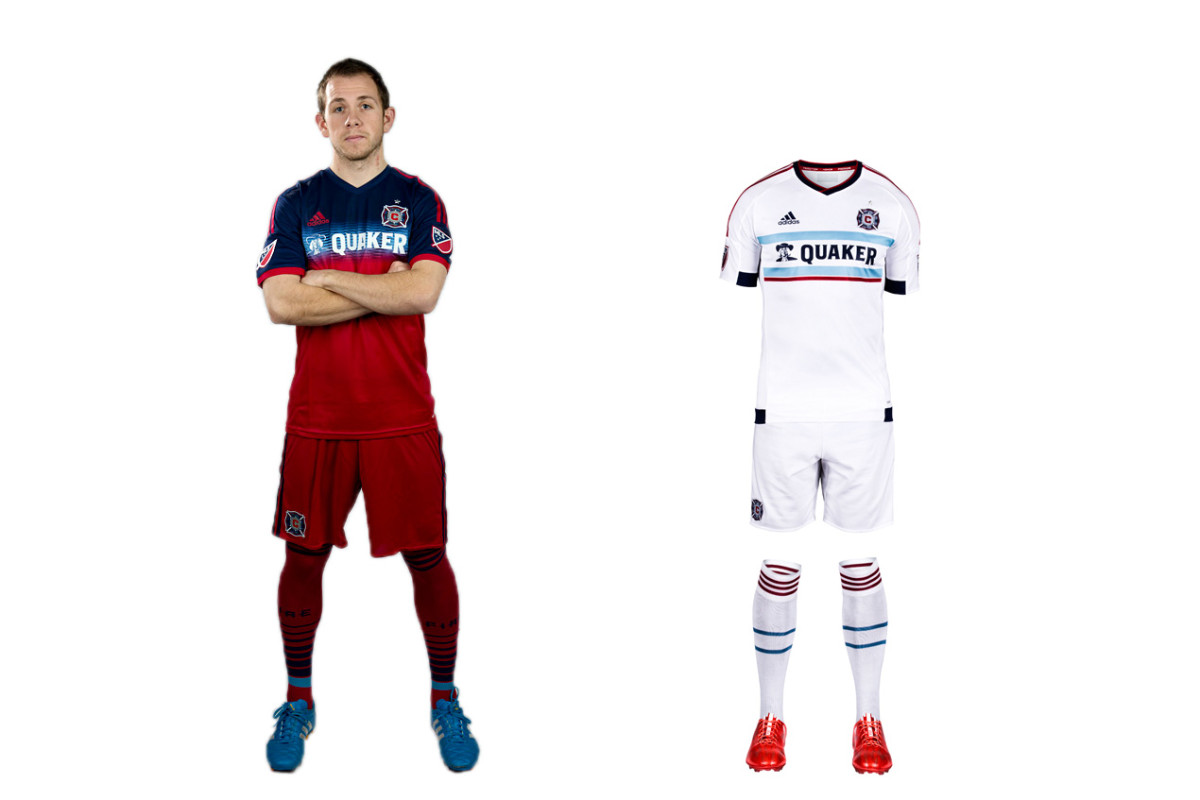
Of the four MLS teams with an all-red home uniform (that’s 20 percent of the league), the Fire were first. They’re the “Men in Red,” after all. But Chicago began veering away from its traditional look in 2012. First the famous white hoop became blue. Then last year, the blue expanded to the chest and shoulders. It doesn’t look bad, but it doesn’t seem right, either. The new away kit is another all-white offering. But at least designers put a bit of thought into this one. The thin, light blue hoops on the shirt and socks, intended to reflect the design of the city flag, are a nice touch.
Montreal Impact
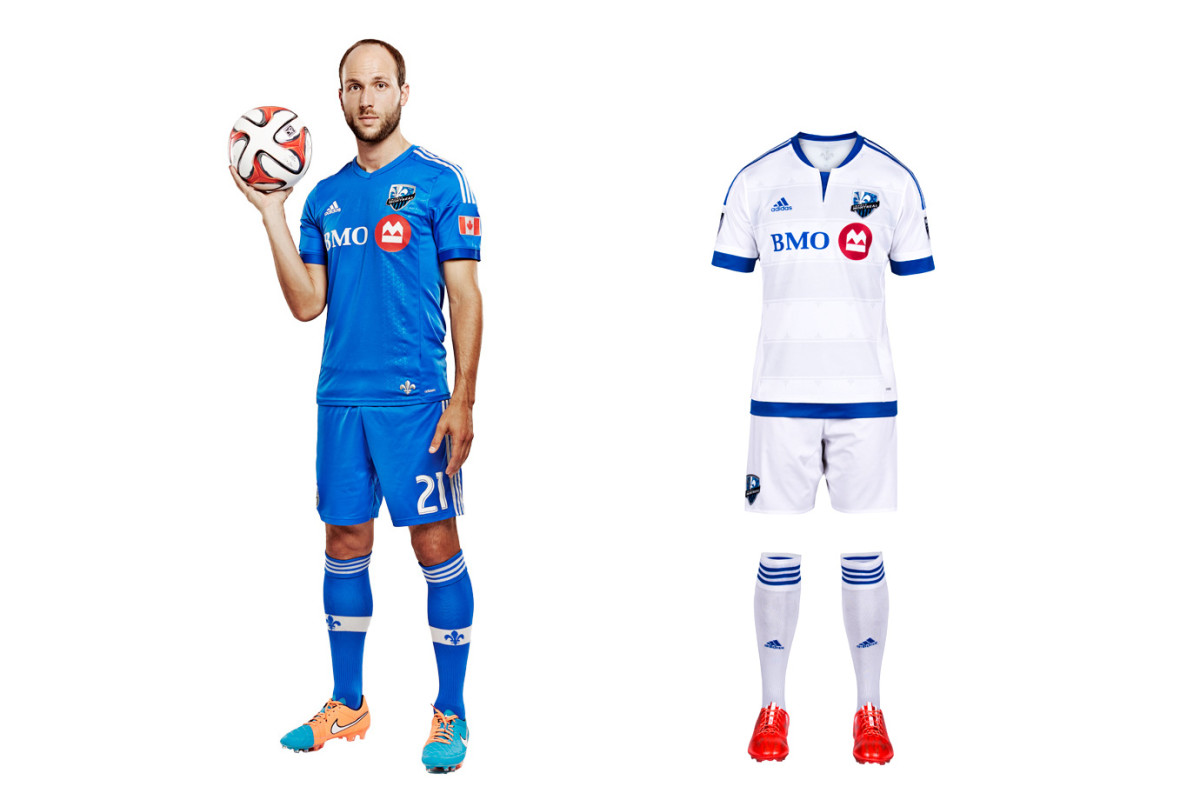
Montreal exemplifies MLS/Adidas’ fixation on tiny details rather than the impact (sorry) a uniform makes when viewed from more than three feet away, which is where most people watch a game. The new away kit features a tiny silver fleur-de-lis affixed to the back and more woven subtly into the fabric. But overall, it’s just another anonymous all-white uniform that mirrors the existing, plain blue primary set. The tragedy is that Montreal’s gorgeous blue-and-black striped alternate, which would be the only striped kit in MLS, is gathering dust. It should be the club’s primary.
D.C. United

D.C. United calls itself the “Black and Red,” but its uniform palette typically has ignored the latter. That’s been rectified with the club’s new secondary kit, which features a welcome splash of red on the traditional white jersey. The home uniform, which carries over from 2014, still looks unfinished without the white chest stripes that were dropped in 2008. If D.C. could find a way to re-introduce them, perhaps above the sponsor logo and behind the crest, it once again would boast one of the sport’s most distinctive designs.
Real Salt Lake
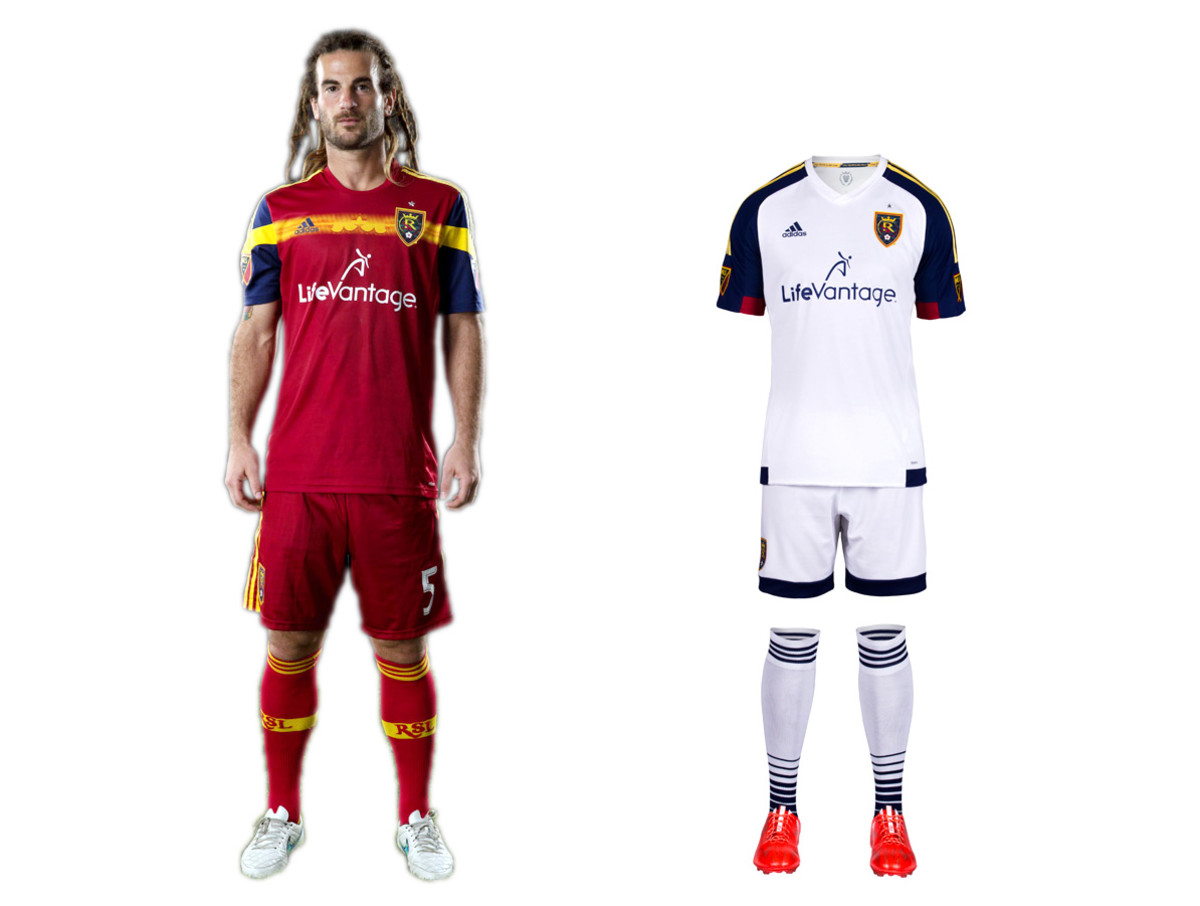
RSL stubbornly refuses to look great. It took a small step forward with its new secondary uniform, which now features two blue sleeves. It's too bad there isn’t even more of RSL’s beautiful claret, cobalt, and gold color scheme in the kit. The red home set carries over from 2014, making it six seasons since RSL abandoned the claret shirt, cobalt shorts/socks combo it wore when winning its only MLS title. The yellow chest stripe adds a little something extra, but RSL’s preference for an all-red kit similar to others around the league instead of a classy, one-of-a-kind look with championship pedigree is baffling.
Toronto FC
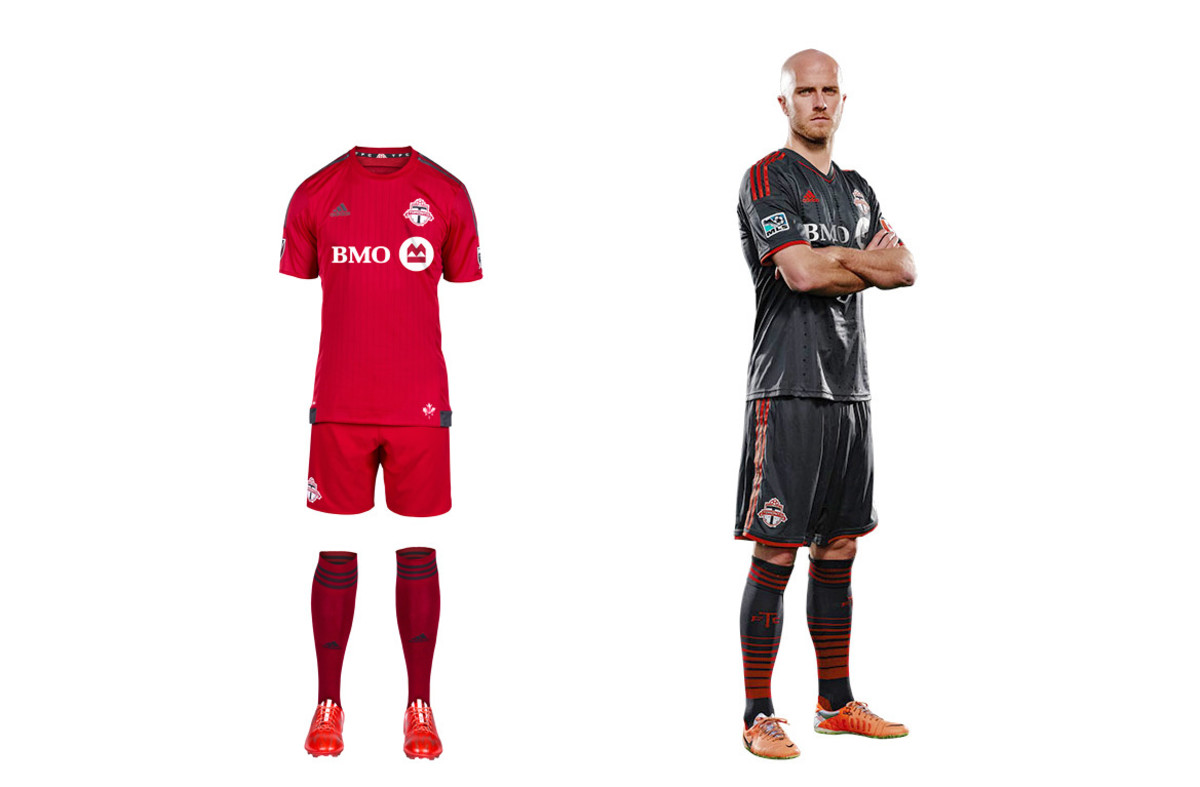
Toronto FC’s new home set could be the reddest uniform in the history of a league that loves red uniforms, which we suppose is noteworthy (guess Adidas insisted on the contrasting three stripes). Club management has focused on building a team capable of ending an eight-year playoff drought, likely leaving little time for kit design. The holdover secondary set is charcoal gray, which features in the TFC logo and is a unique uniform color in MLS. The hooped socks finish off a striking look and make us wish there was a bit more gray in the primary.
New England Revolution
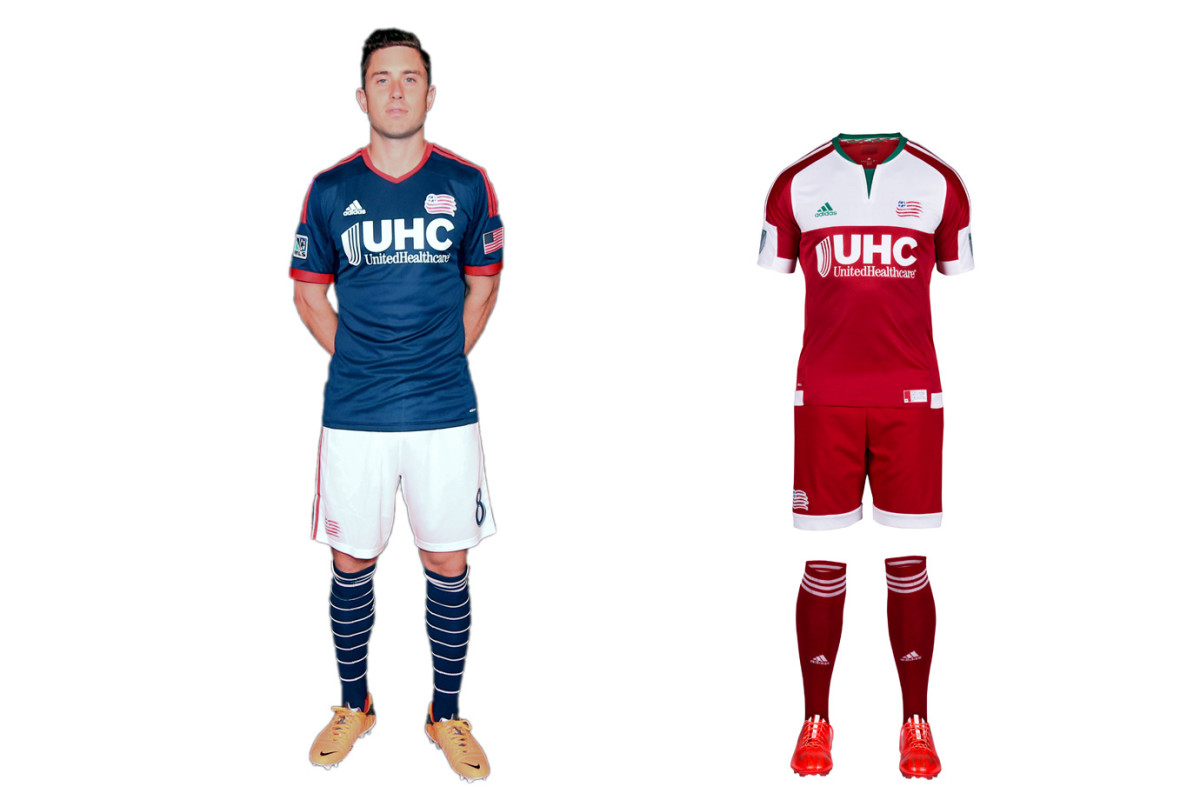
The Revs are Exhibit A for the effect a second color, even if it comes from something as mundane as a plain pair of shorts, has on a club’s brand. Long a believer in boring, N.E. last year overhauled its home blues with white shorts and hooped socks. It’s a classy yet instantly recognizable look. The image shake-up continued Tuesday with a new secondary kit inspired by the regional flag flown during the American Revolution. The red-and-white set is clunky and geometric, but it’s different, daring and local. Better to take a chance than look dull and anonymous.
Philadelphia Union
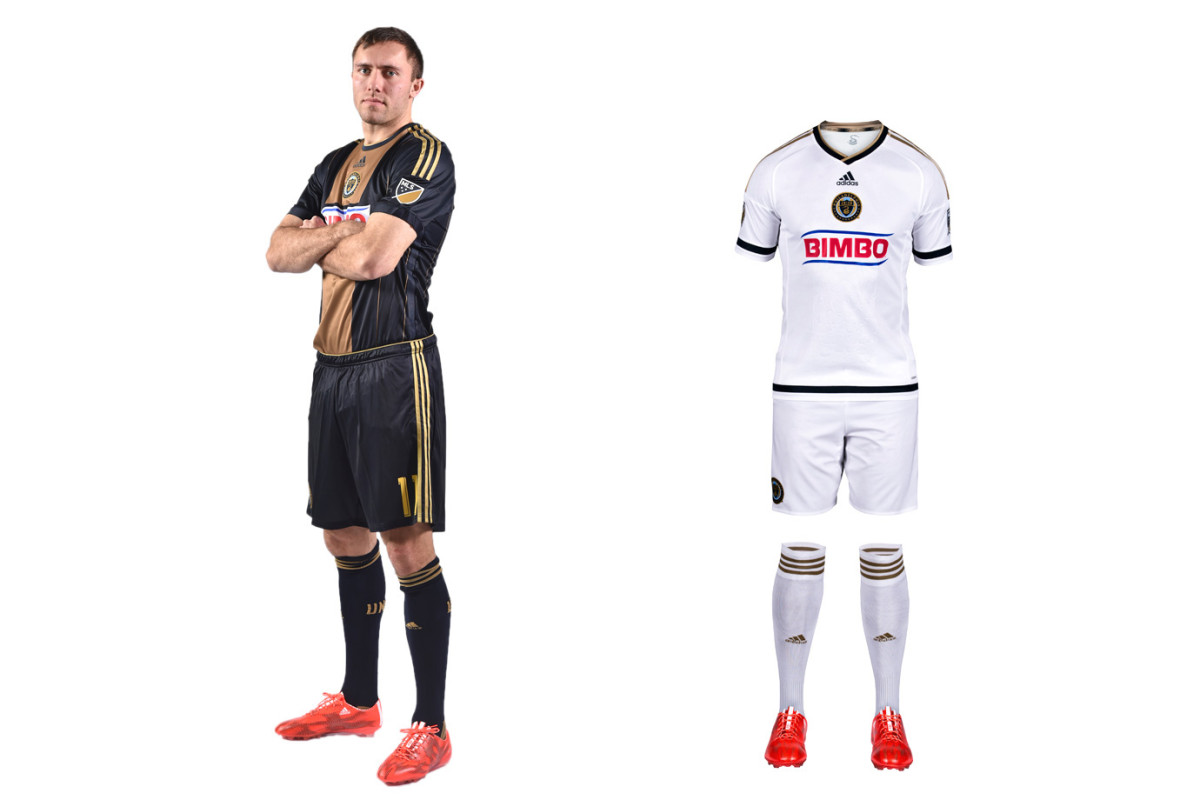
The Union got it right in 2010. The inaugural navy kit with the gold center stripe, reflecting the Philadelphia flag, was iconic. The gold-and-blue away set, a reversal of the primary, was one-of-a-kind. The holdover home uniform still looks great, although the sponsor’s logo wrecks the balance. But the new secondary is a disaster, a needless departure from the brand and an 10th all-white MLS kit. Once innovators, the Union are now followers. The “WE ARE ONE” collar slogan, the tiny snake below the neckline and the embossed stars on the front are lost in a sea of white.
Vancouver Whitecaps
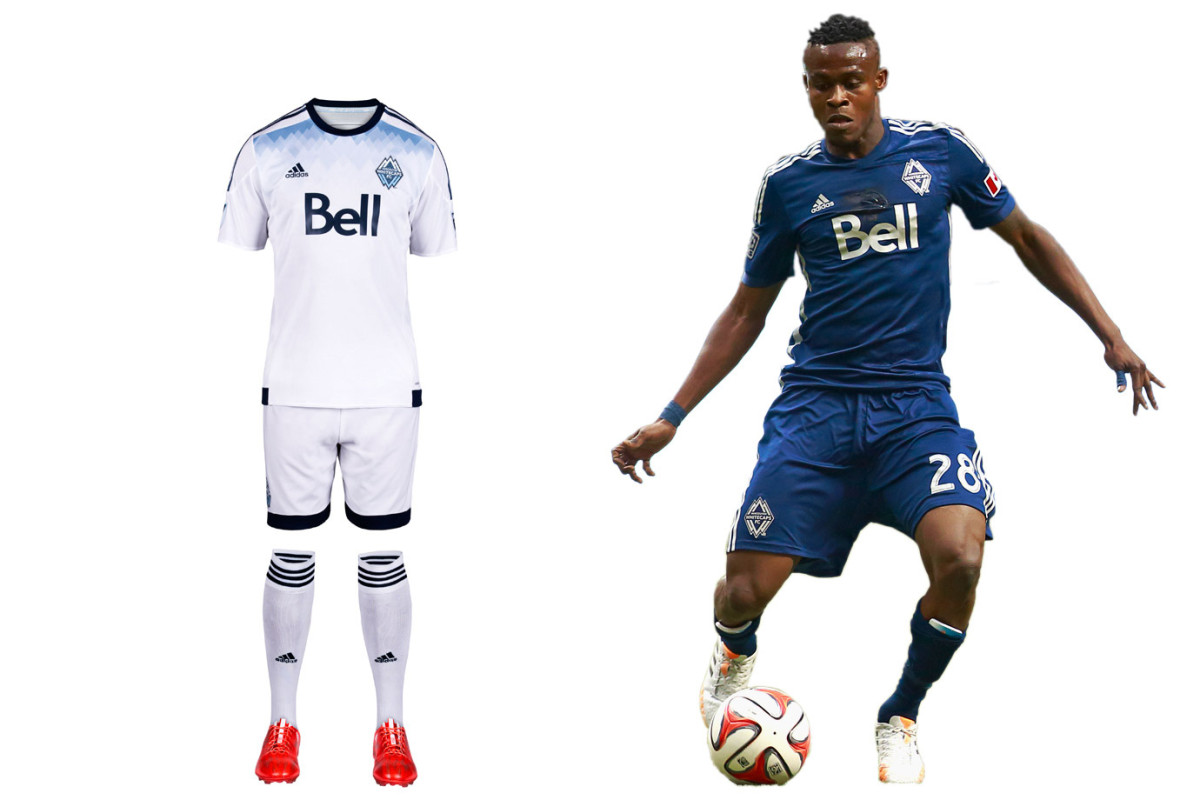
The Vancouver Whitecaps new primary uniform is meant to be experienced up close. It’s slogan heavy. “Our All. Our Honour.” appears inside the neck and on the hip. “SINCE 1974” is on the back. The thin, diagonal pinstripes that featured on the previous home kit have been replaced by light blue shading designed to represent Vancouver’s water and mountains. It’s all a bit too subtle. The shirt will look nice with jeans, but in the end, Vancouver’s all-white kit—and the holdover mono-navy secondary—simply blends in.
Portland Timbers

Portland quietly switched crests, from a logo featuring its name to a simpler version focusing on the axe and chevrons (the old logo lives on elsewhere). Few teams wear a badge with no writing, but the Timbers can because they’ve built such a powerful brand. Only they could wear the new home set, a bold green-and-white offering anchored by the chevrons. They're a bit wide, and the yellow below the collar clutters the shirt, but it's impressive overall. The road kit, released in 2014, is everything a good one should be: distinctive, perhaps edgy, yet connected to the club. In this case, Rose City red.
Columbus Crew
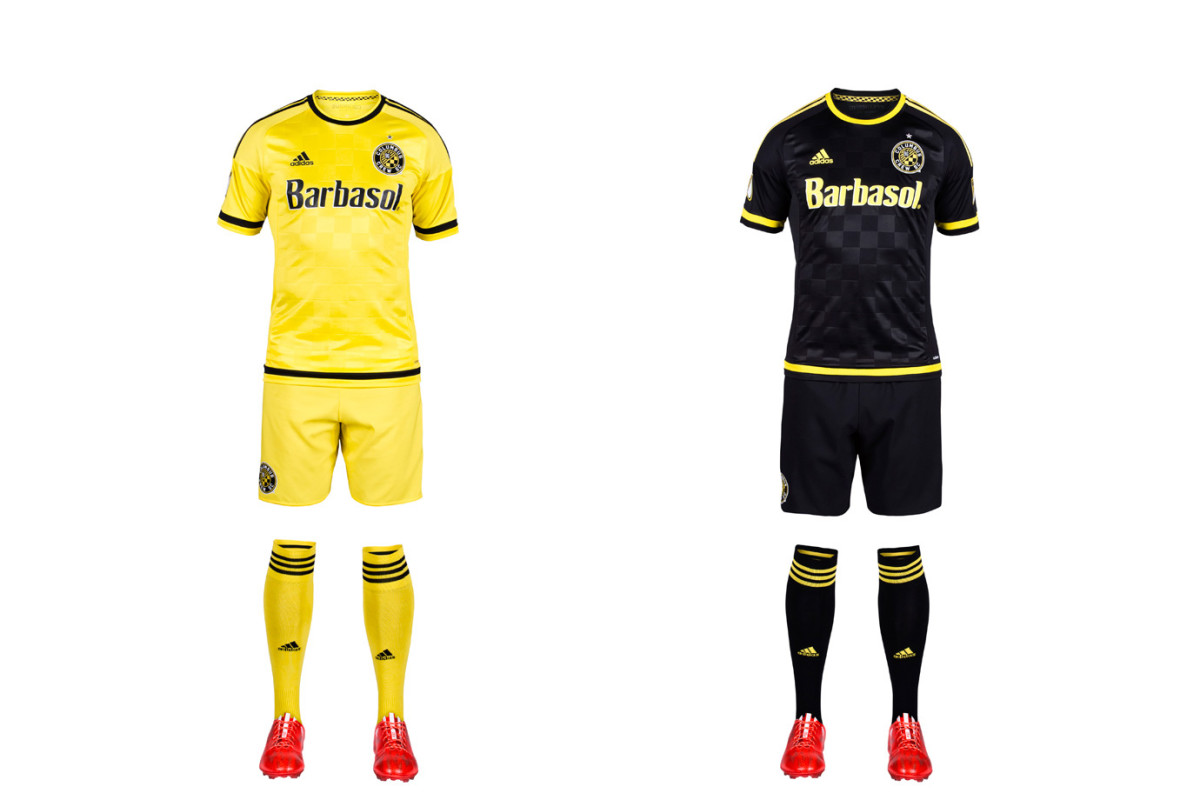
The Crew released new home and away sets featuring the club’s revamped logo, a roundel that looks nice enough but makes sense only with a cheat sheet. The explanations (the ‘O’ for Ohio, the founding year, the checkerboard pattern found in flags waived by fans) certainly tie the club to Columbus more than the goofy construction workers did. As the Crew forge ahead, they’ll stay true to their sartorial tradition. The all-yellow primary is simple but elegant, and certainly recognizable. The mono black secondary could use a bit of flourish–why so subtle with the checkers? But it works and shouldn't be needed that often, anyway.
Orlando City SC
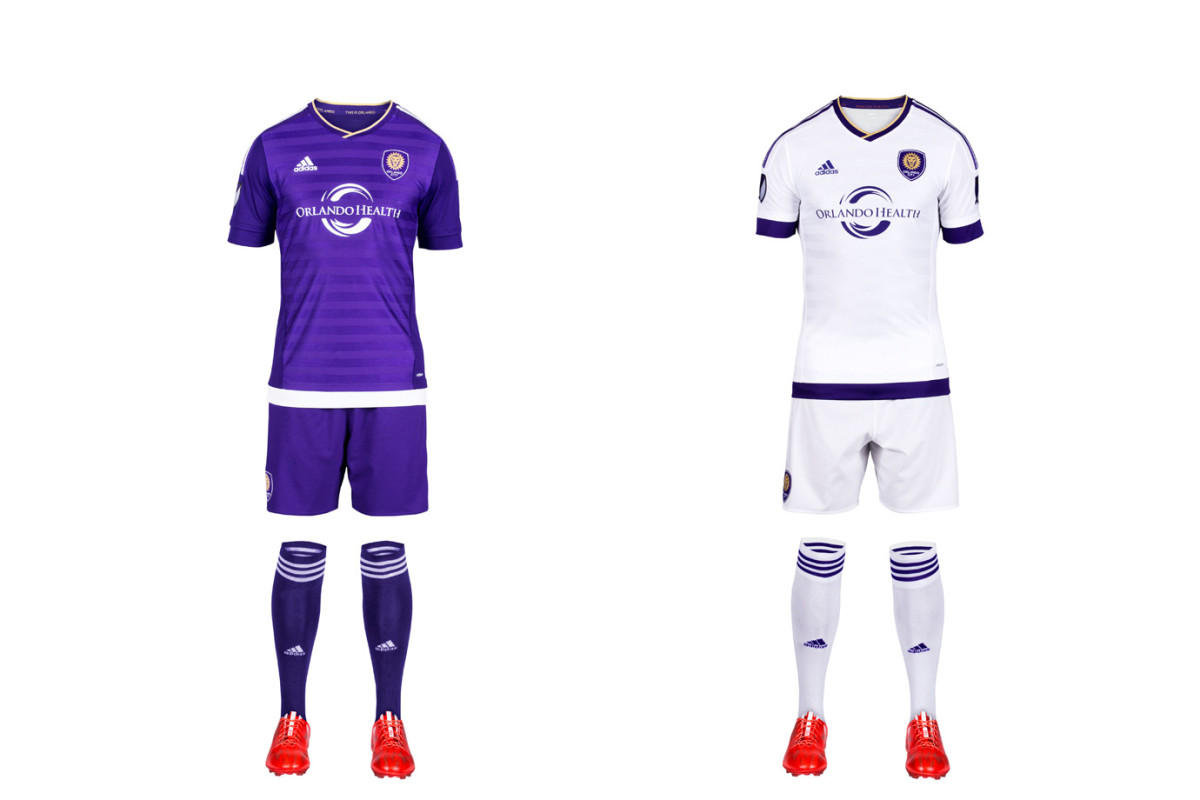
The Lions’ love for purple is welcome in a league featuring so many similar looks. But it didn't result in creative inaugural kits. The home uniform features more up-close details, like “jacquard engineered banding…representing Orlando City’s transition to a new era” and even the club's old USL logo inside. The mono-white secondary has colored hoops on the waist and sleeves and includes more small symbols and slogans. But it’s still just another white set. The answer is obvious—swap the socks. The “Chelsea” look is underrated. White hosiery at home and purple on the road would make all the difference.
New York Red Bulls
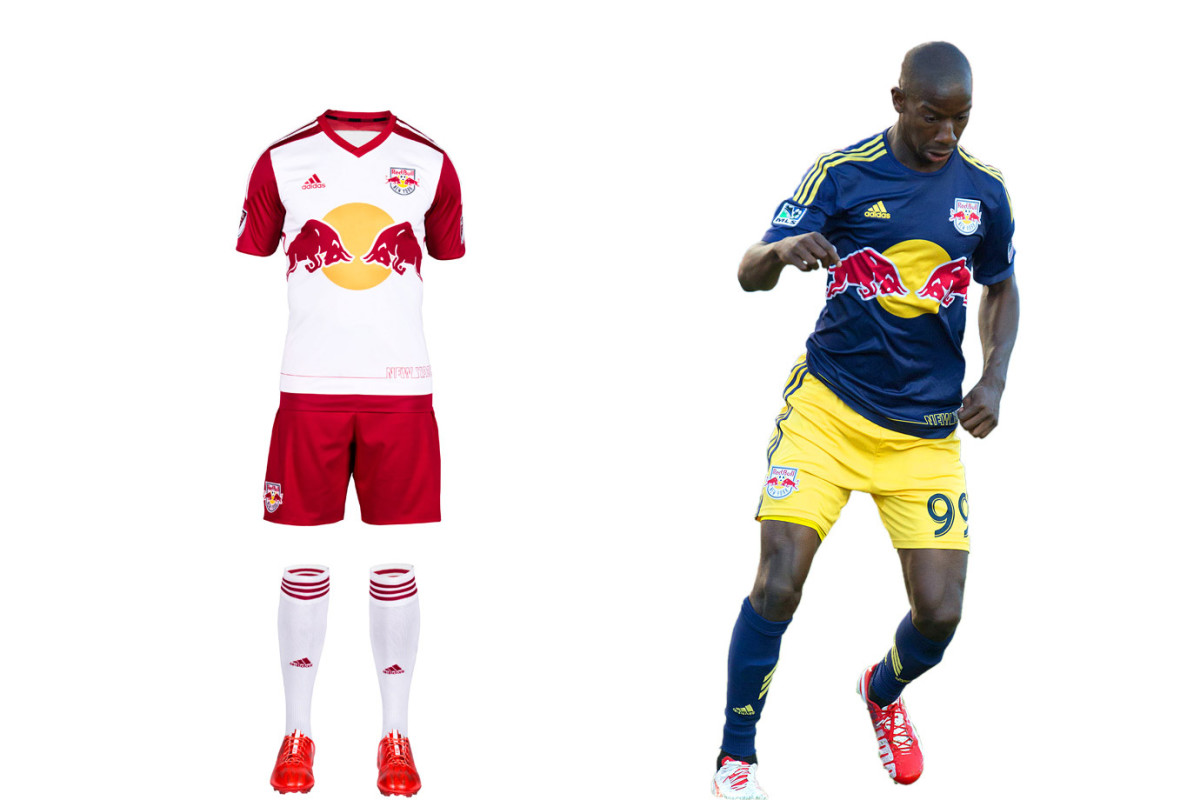
The Red Bulls have company in New York so have set out to reinforce their tenuous connection to the market within the constraints of the club’s corporate brand. The only white-red-white team in the league, RBNY now must compete with NYCFC’s pale blue. The Red Bulls’ new home set doubles down on that contrast with red sleeves and “NEW YORK” emblazoned on the shirt’s lower left in a manner “mimicking the iconic New York skyline.” The “EST.1996” on the back collar reminds fans who was there (or nearby) first. The holdover secondary definitely is unique and is great in reasonable doses.
Houston Dynamo
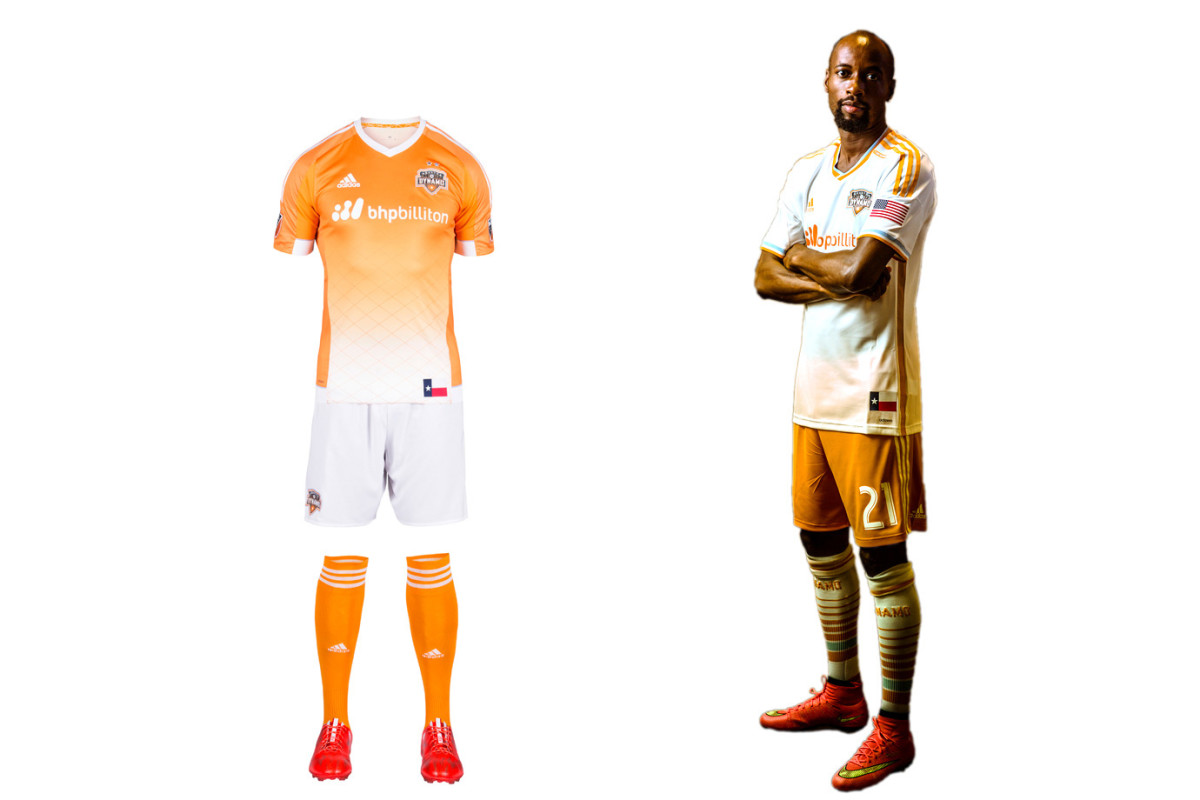
Houston’s club motto is “Forever Orange,” and while that remains the cornerstone of the brand, the Dynamo typically add a wrinkle here and there to ensure we’re not beaten over the head with it. The new home uniform is a great example. The white shorts and checkered fade on the jersey add the right amount of contrast. On occasion, the Dynamo have worn monochrome both home and away. But there’s no need to do so, especially on the road. The balance in the primary kit and the immediately identifiable orange shorts with the secondary set showcase the Dynamo at their best.
Sporting Kansas City
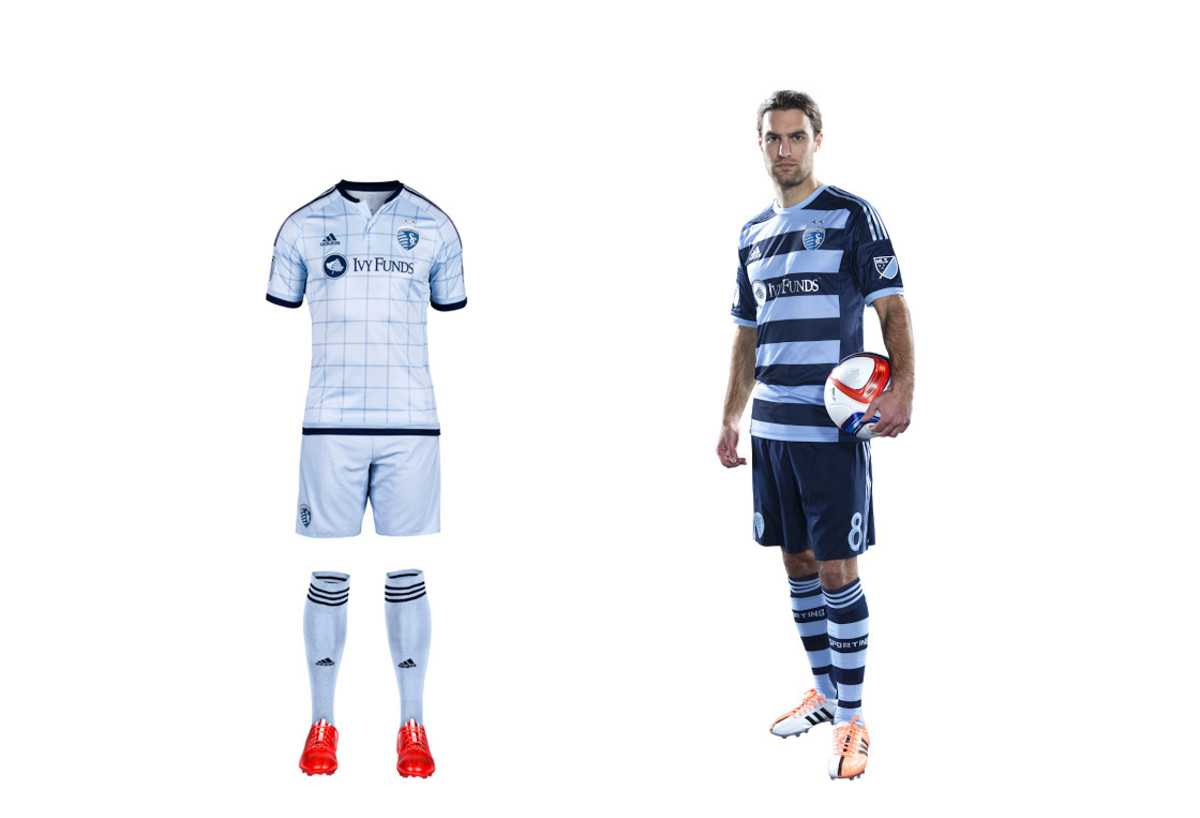
From irrelevant to trendsetting, SKC has profited from one of the most successful sports rebrands in recent history. The club now must share light blue with NYCFC, but Sporting still stands out. The new home set is a departure form the bicolor “state line” uniform of 2013-14 and is anchored by a “fashion-forward window pane pattern” that’s almost as preppy as the recent argyle alternate kit. The secondary uniform is stunning. The hoops, which mirror the stripes on the club crest, highlight one of the most eye-catching sets in MLS history. It’ll be tough to see it go after this season.
FC Dallas

FCD’s kits are an example of a good idea, poorly executed. The club made an inspired decision to go with hoops when rebranding in 2005, but the jerseys always let them down. Unnecessary seams, plackets and panels always ruined the shirt. Dallas gave up last year and went with a boring all-red primary. But it stuck with the hoops on the new blue-and-white secondary, where the side panels and sleeves still disrupt the flow. Both blue and white shorts are an option. Our 2016 ideal: a primary jersey with seamless, sleek red and blue hoops. Unique and colorful, but less jarring. Make it happen.
Colorado Rapids
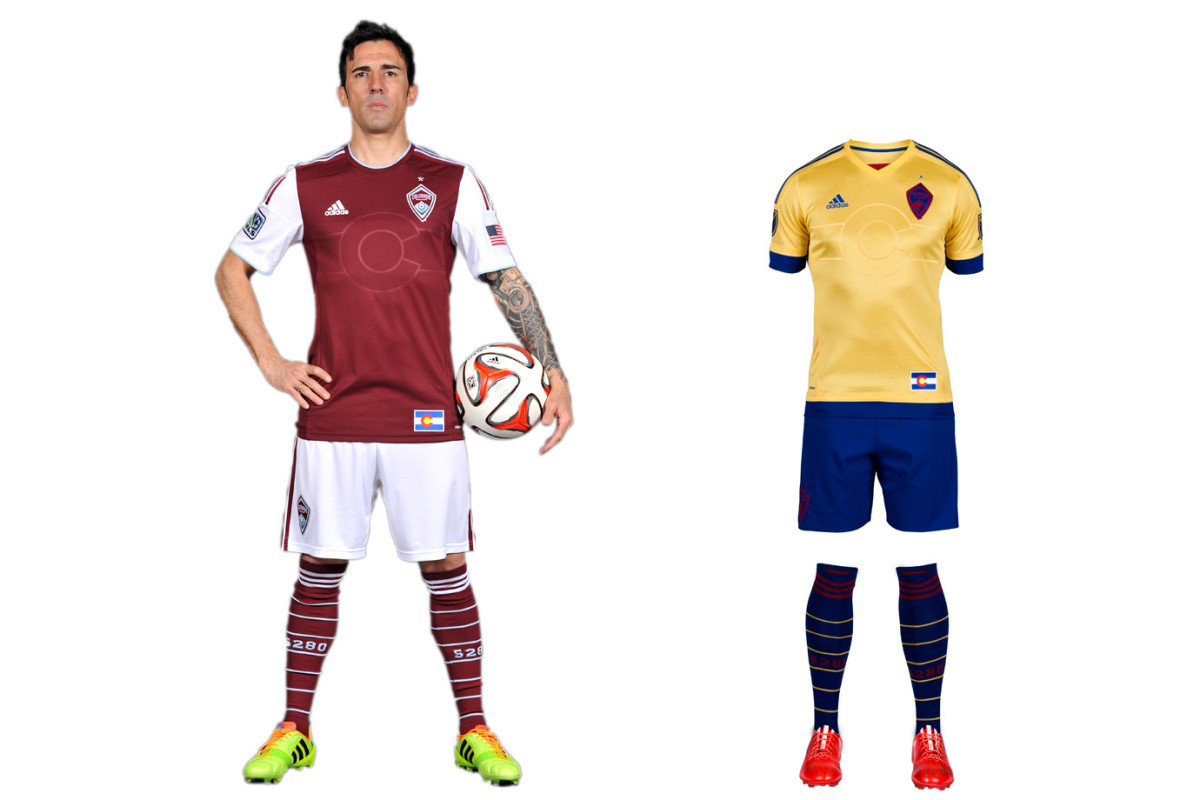
Another club that’s bounced from brand to brand (green-and-white, blue-and-black), the Rapids have settled in nicely with the unique but elegant burgundy-shirt, white-shorts combo. The sleeves, which mirror those worn by sister club Arsenal, add a subtle touch of flair. The new away uniform is a prime example of how a secondary kit can be tasteful and connect to a club’s brand. Last season’s mono blue state-flag set has evolved into a sharp gold-and-blue kit that maintains Colorado's colors and stands out from the crowd. We’re not fans of recolored badges—logos should be sacrosanct—but overall it’s a winner.
Seattle Sounders
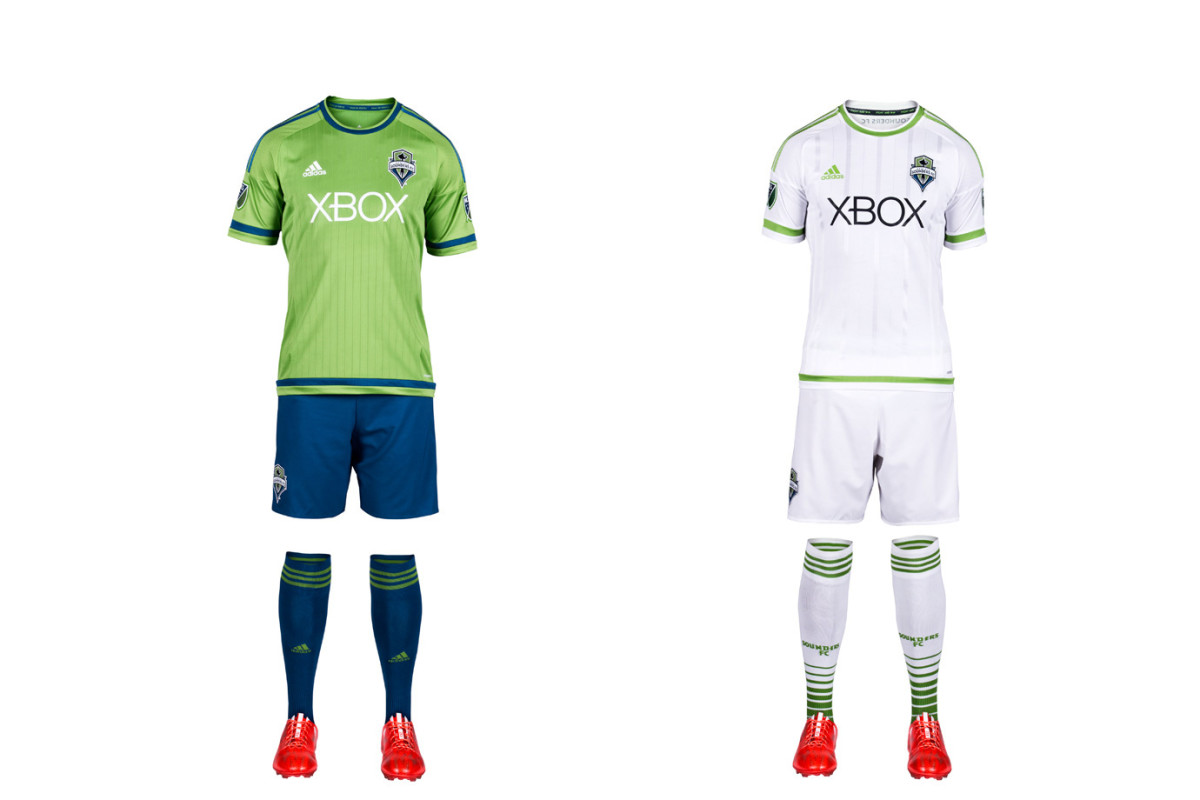
The club that brought us rave green, cascade shale, super cyan and electricity has succumbed to the all-white virus. Seattle is one of five MLS clubs to adopt the look this season, ensuring half the league now embraces the white-out copout. The Sounders new away kit is especially devoid of any personality—a surprising choice for a club that has much of it. The new home set features a less cluttered shirt than in seasons past. It’s a template, but it’s a step up. The uniform also features blue shorts and socks for the first time. Here’s hoping we see it as often as possible.
San Jose Earthquakes
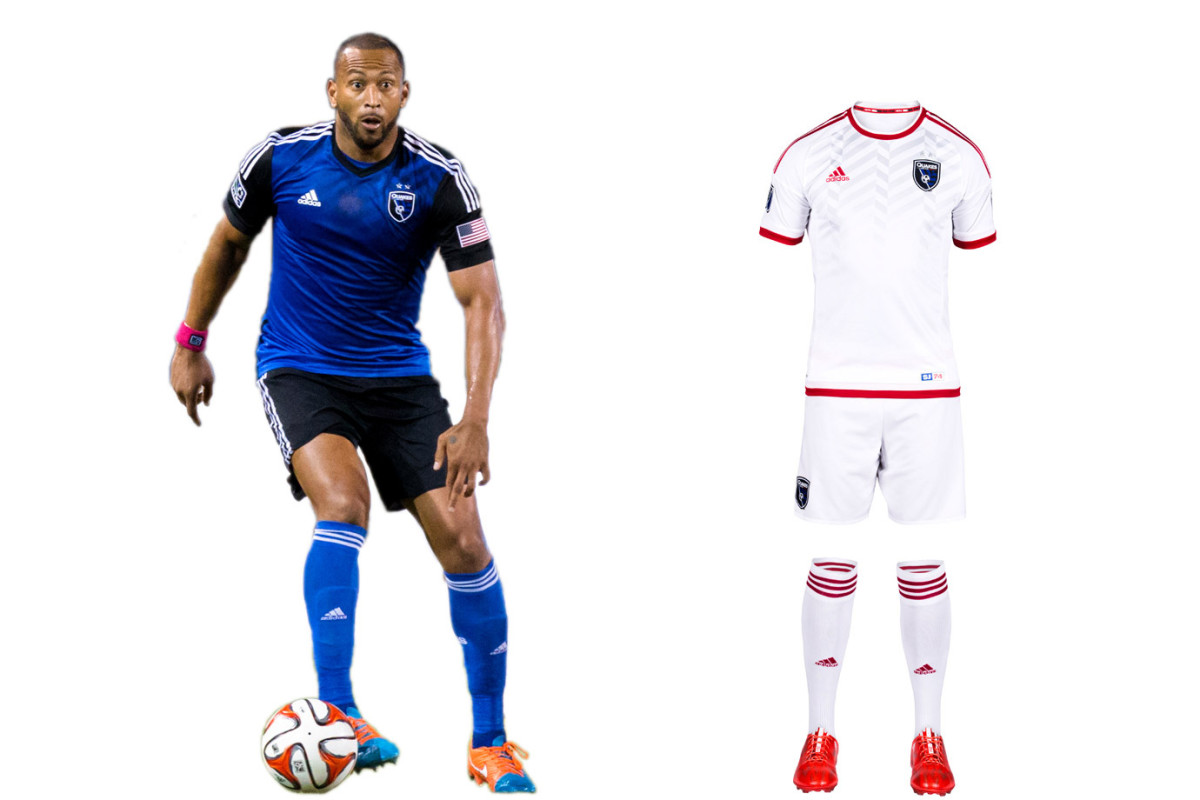
"Earthquakes" is an appropriate moniker for a club that’s experienced so much upheaval. While the new Avaya Stadium offers stability, the brand remains in flux. SJ’s '14 overhaul produced a beautiful blue-and-black primary kit that’s already a modern classic. But the logo, awkwardly anchored by “Quakes”—a nickname of a nickname—lacks gravitas. We liked the re-introduction of the NASL-era red, which inspired last year’s away kit. That’s been replaced by a new white secondary set (yes, another one). It lacks the creativity, individuality and ambition that should be associated with a Bay Area club on the rise.
